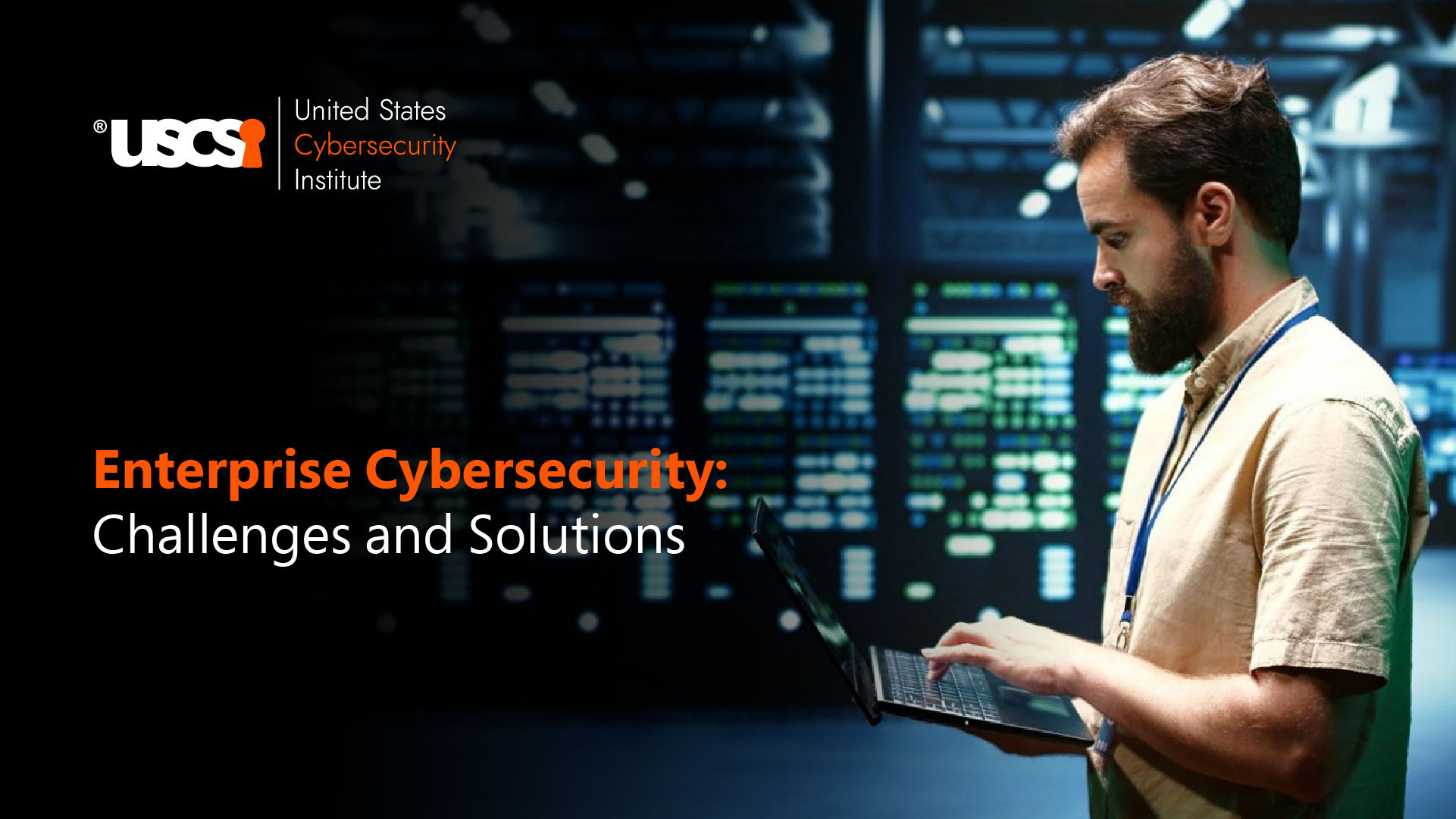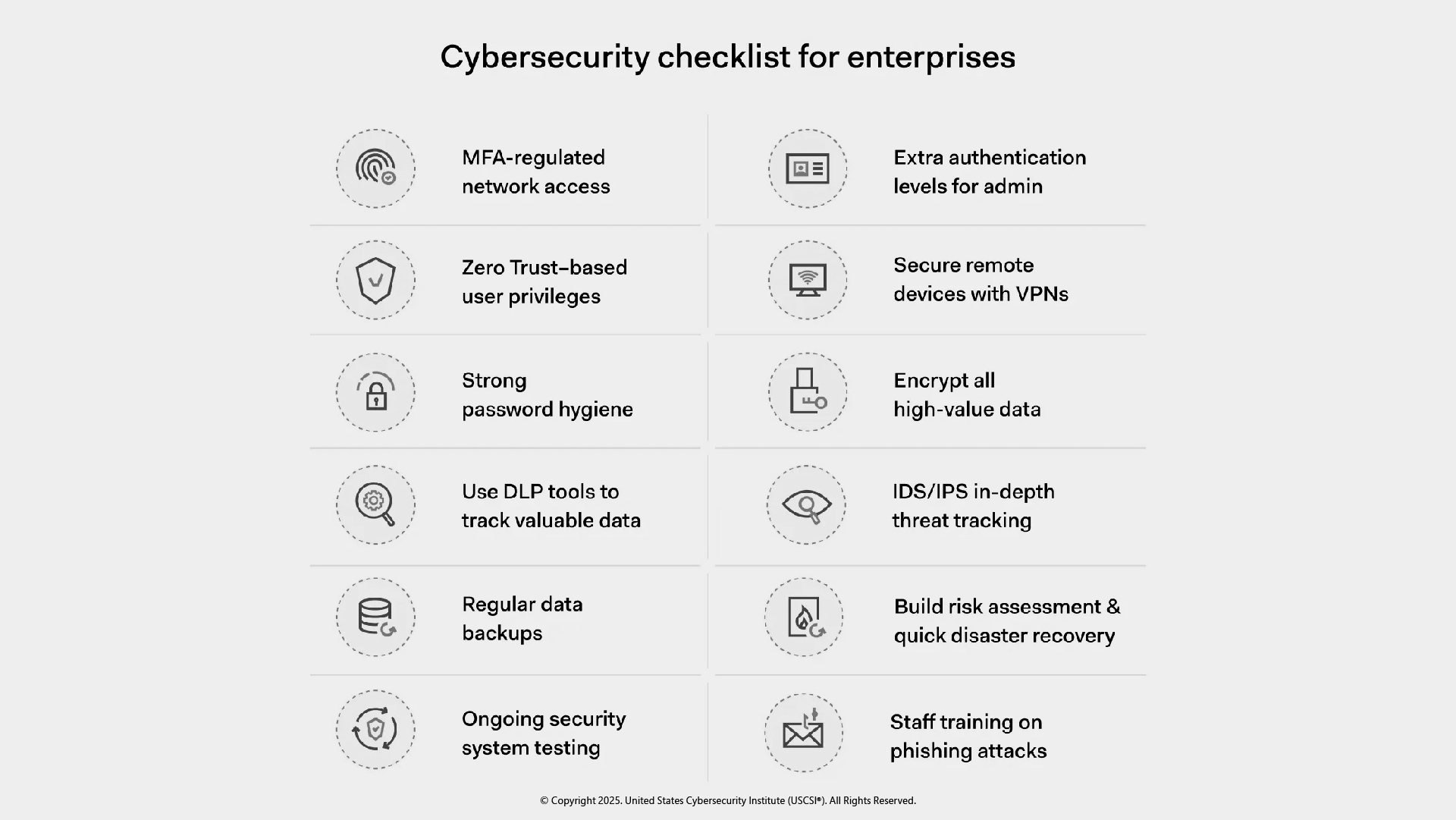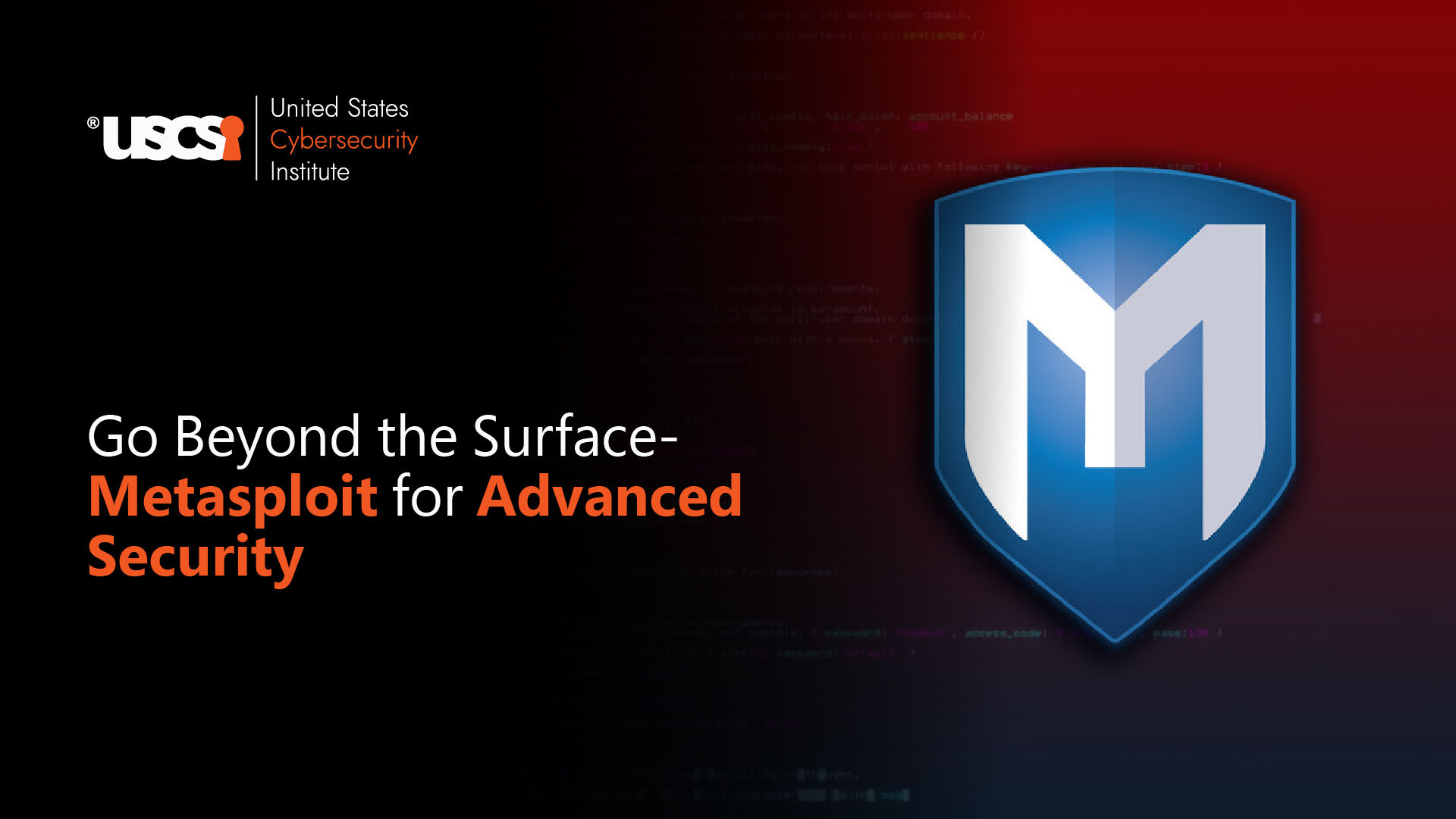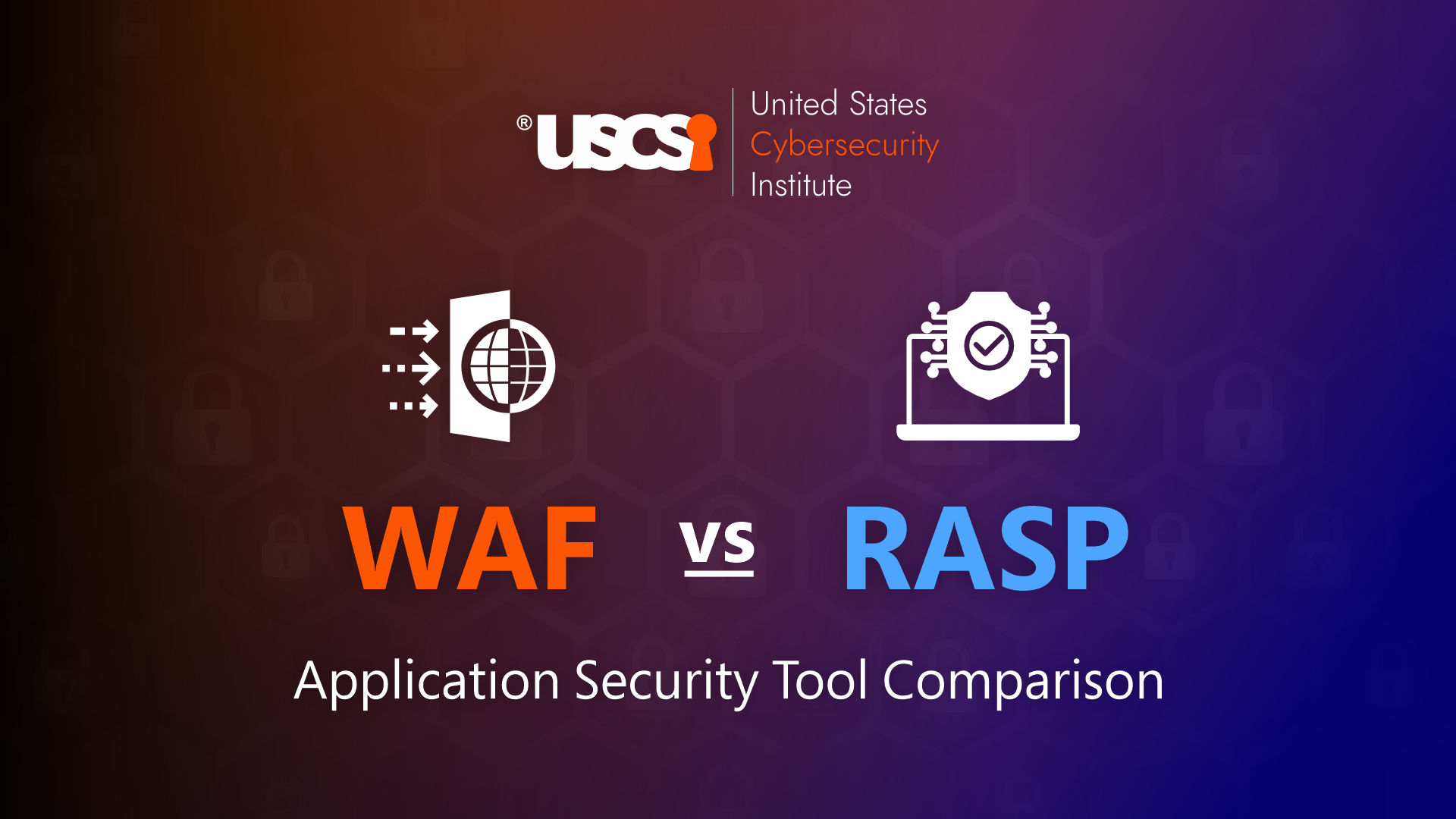

Enterprise Cybersecurity: Everything Modern Businesses Need to Know
Enterprises consist of a wide range of IT components including IoT devices, networks, and huge amounts of data which makes it a prime target for a variety of cyberthreats. Enterprise cybersecurity here plays an important role in preventing an organization’s critical infrastructure and sensitive data from hackers by providing essential security controls to manage the cybersecurity risks they face.
Whether your organization is struggling to meet the required cybersecurity strategies to mitigate modern cyber threats, or you want to excel in your cybersecurity career by mastering the latest enterprise cybersecurity techniques, this article will give you a great insight on top challenges, and best cybersecurity practices.
What is Enterprise Cybersecurity?
Enterprise cybersecurity is an important element of organizations' everyday cybersecurity operations. It includes different cybersecurity tools, techniques, and technologies to protect digital assets and prevent the risk of cyberattacks.
It aims to protect data during transit and at rest, the people associated with the enterprise, networks, and devices the organizations and their workforce use. Most importantly, organizations in several industries need to abide by certain laws and regulations. So, enterprise security also encompasses the legal structures applied to the organization.
Why is Enterprise Cybersecurity Important?
Today, the organization’s biggest priorities include securing its important data assets and network protection. Cybersecurity for enterprises helps achieve this and it is also important because of several other reasons as well including:
- Protection from data breaches which cost enterprises a whopping $4.88 million on average in 2024 (source: IBM Data Breach Report)
- Offers multilayer protection to networks and devices making it difficult for hackers to carry out their attacks.
- Considers all aspects of data and network protection and helps cybersecurity specialists with efficient risk management.
- Assists businesses to grow securely by allowing them to focus on KPIs rather than security at all times.
- Enterprise cybersecurity helps organizations assess and manage third-party risks as well by choosing secure partners to work safely with them.
- It also enables enterprises to plan solid cybersecurity strategies and spread cybersecurity awareness among employees which strengthens their overall security posture.
Enterprise Cybersecurity Architecture
Now, here are some important elements of an enterprise cybersecurity architecture:
-
Distributed Security Controls
Instead of relying on a single point of defense, security measures are spread throughout the organization’s IT environment. This method eliminates the risk of single points of failure and minimizes challenges related to latency or impact on performance because of implementing security.
-
Segmentation and Isolation
Network segmentation is used to divide the network into various sections aligned with various business functions. This in turn isolates sensitive areas and requires inter-segment traffic to pass through a firewall that ensures proper inspection of threats and policy violations.
-
Redundancy and Resilience
A “defense-in-depth” strategy employs multiple, overlapping layers of security. This means that even if one security measure fails, it doesn’t compromise the entire enterprise.
-
Centralized Management and Monitoring
It is very much essential to manage and monitor cybersecurity tools from a central console to streamline operations and improve overall response times. This helps to eliminate the challenges related to managing different systems across the enterprise and reduces the “context-switching” which can impact effective security operations.
Enterprise Cybersecurity Best Practices
Though implementing enterprise cybersecurity might look overwhelming, effective planning and execution can make this process much easier.

Here’s the enterprise cybersecurity best practices to improve your overall security:
- Strong Access Controls – Organizations must implement multi-factor authentication (MFA) and least privilege principles
- Regular Patching – It is important to patch all the systems and software updated with the latest security patches to mitigate the latest vulnerabilities and threats
- Endpoint and Network Security – It includes deploying firewalls, intrusion detection and prevention systems (IDS/IPS), and implementing anti-malware solutions.
- Security Awareness and Training – Employees must be educated about the latest phishing tactics and other threats and should be trained on best cybersecurity practices
- Incident Response Plan – Organizations must develop and regularly test a plan to handle security incidents. They can perform penetration testing to identify and mitigate vulnerabilities in their existing security systems
- Data Encryption – Data should always be encrypted both at rest and in transit
- Regular Backups – Organizations need to implement regular data backups and test restoration procedures
Following these best enterprise cybersecurity practices, organizations can achieve a high level of security to identify and mitigate all kinds of cyber threats.
Enterprise Cybersecurity Solutions
There are numerous enterprise cybersecurity solutions available in the market aimed at enhancing an organization’s overall defense mechanisms. Here are some top solutions to consider based on their specific needs:
- Network Security
- Firewalls
- Intrusion detection and prevention systems (IDS/IPS)
- Virtual Private Networks (VPNs)
- Network Segmentation
- Endpoint Security
- Antivirus and anti-malware
- Endpoint detection and response (EDR)
- Data Security
- Data Loss Prevention (DLP)
- Encryption
- Identity and Access Management (IAM)
- Multifactor Authentication (MFA)
- Privileged Access Management (PAM)
- Security Information and Event Management (SIEM)
- Vulnerability Management
- Vulnerability Scanning
- Penetration Testing
- Cloud Security
- Cloud Access Security Brokers (CASBs)
- Cloud-native firewalls
- SD-WAN architecture
Agentic AI for Enterprise Cybersecurity
Apart from the above-mentioned traditional enterprise cybersecurity solutions, Agentic AI is revolutionizing enterprise cybersecurity by integrating advanced AI systems to operate autonomously and secure an organization’s digital assets.
While traditional cybersecurity measures rely on predefined rules, agentic AI agents can understand the environment, make decisions, and take necessary actions on their own to achieve specific goals.
This means AI agents can proactively perform threat hunting and investigate security incidents without much human involvement. They can also perform countermeasures in real-time which can help contain the damage.
These advanced systems can continuously learn and adapt to outpace evolving threats and improve an organization’s security measures by reducing manual tasks and the burden on human cybersecurity professionals.
Challenges to Enterprise Cybersecurity
The technology is evolving rapidly and cyber criminals are using advanced tactics to carry out their attacks. Therefore, organizations need to address several challenges as mentioned below to effectively implement cybersecurity strategies and solutions.
- AI and generative AI-powered cyber attacks
- Increasing cybersecurity skills gap
- Increased number of all types of cyber attacks
- Rise of Quantum computing and post-quantum cryptography
Apart from these, organizations implementing AI solutions for their cybersecurity measures should consider factors like data privacy and security, bias in algorithms, and transparency to make it more adaptable and efficient.
What Does the Future of Enterprise Cybersecurity Look Like?
The cyberthreats are evolving and enterprises will be required to adapt to evolving threats. This can be done by:
- Upgrading from WPA2 to WPA3 encryption. This will require making updates to their Remote Authentication Dial-In User Services (RADIUS).
- Securing an ever-increasing number of interconnected IoT devices and highly advanced 5G technologies.
- Protecting the local LAN connections of workers who are working from home to avoid getting access to the organization’s network.
The Final Thoughts!
Enterprise security is undoubtedly an integral part of all business operations in today’s highly vulnerable business environment where the attack surface spans every network, device, and system. By properly planning and implementing enterprise cybersecurity practices, organizations can enhance their security measures to a great extent.
If you are someone looking to advance in your cybersecurity career, then you must be aware of various cybersecurity tools, techniques, and strategies to successfully implement enterprise cybersecurity.
You can master these skills through the best cybersecurity certifications from USCSI®.





